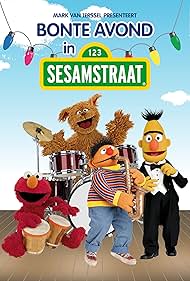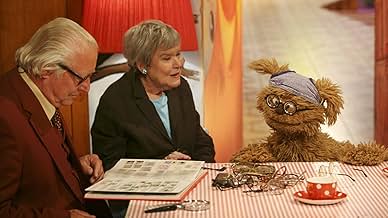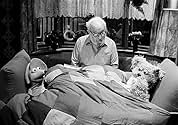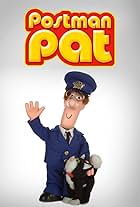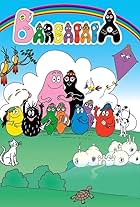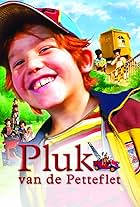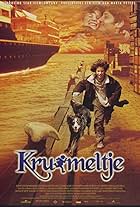Dutch version of Jim Henson's Sesame Street.Dutch version of Jim Henson's Sesame Street.Dutch version of Jim Henson's Sesame Street.
- Awards
- 1 win & 2 nominations
Browse episodes
Storyline
Did you know
- TriviaRenée Menschaar became the first female to perform the role of Pino in 1990, taking over the part from Leo Dijkgraaf. Prior to that, she had been assisting puppeteer Bert Plagman as Tommie's right hand for seven years.
- Quotes
Meneer Aart: Ieniemienie, I've had enough.
Ieniemienie: Yes, but...
Meneer Aart: I've been working hard all day, and now I just want to rest.
Ieniemienie: But, but Mr. Aart...
[He sits down on the deckchair, which promptly tears]
Ieniemienie: Oh, yeah. Ha-ha. So, now it's really broken.
[Aart looks annoyed]
- ConnectionsFeatured in Plafond over de vloer: De zoon van Jacques Plafond (1986)
Featured review
This version of Sesame Street first appeared as a joint venture between the Dutch (NOS) and Vlamish (BRT) Television (each Sunday afternoon for 25 minutes). Children's's Television Workshop contractually decreed that 50 per cent of the show should consist of translated material from the American version, while the remaining half would be new, locally produced stuff. This means that Bert, Ernie, Cookie and the rest are all there, yet never interact with the Dutch and Vlamish actors or puppets. The very first Muppets made in Holland, Pino the giant bluebird and Tommy the tiny teddy-bear, were created without the benefit of Jim Hensons's workshop and it showed. These characters soon grew to represented the children on the show, for the production staff had great difficulty incorporating toddlers into the proceedings. Eventually it became tradition to end every episode with a bed time story being told to a group of actual tots.
Up till then it had been Dutch practice to broadcast one five minute show for children at bed time every night. These include long running puppet shows like "De Fabeltjeskrant" and "Paulus de Boskabouter". However in 1978 the NOS convinced the powers that be that a daily dose of Sesamstraat (15 minutes long) would be much more educational. Soon after that the BRT stopped their involvement, though two Vlamish actresses remained on the street. While the original Sesame Street had been aimed at children that might not be privileged enough to go to school, Sesamstraat always thrived to further the young viewers (aged 3-7) emotional growth. The show still features American made animations on the alphabet and numbers next to Dutch segments involving social situations. For this reason the adult characters represent all manner of grown up family members, from parents to grandparents and older sisters and brothers.
1980 saw the arrival of a third Muppet character (and the first to be build in the states): a female mouse called Ieniemienie. Afterwards both Tommy and Pino had a Muppet makeover, meaning Pino lost a lot of bulk to become a blue feathered clone of Big Bird, while Tommy transformed into some kind of dog (though it is still not entirely sure what kind of animal he represents). While all three of these Muppets are European creations, their rights are owned by CTW and the puppeteers are prohibited from appearing in character any where else but on Sesamstraat. For this reason it took many years of lobbying and legalities for a fourth Muppet, a 'newborn baby' piglet called Purk, to join the family in 2003.
Still, the show lacked an Oscar the Grouch, so a cranky old man played by Aart Staartjes moved into the street in 1984 (Aart had been working behind the scenes since 1980). He quickly became the writers favorite and soon it seemed every Dutch segment seemed to revolve around him. As the actors aged over the years, the role models they each one of them represents have changed. By now Meneer Aart has become a mellower grandpa figure and a new, easily irritated neighbor (Buurman Baasje) took on his former role. Every year on the fifth of December Sint Nicholas comes to Sesamstraat to celebrate his birthday (and the coinciding national children's holiday) in a TV special (25 minutes long!) this has become a tradition since 1987.
While Sesame Street has always remained firmly grounded in the same New York neighborhood since 1969, the Sesamstraat set has gone through many changes over the years. From being shot on location in the very first season, to a life like studio set for the second, past an abstract set in the early eighties with cardboard trees and everything in between. The producers purposely made it difficult for the viewer to figure out in which houses the various characters live, although Sien (the only human character that has been on the show since the very start) has always been the proprietor of her own little shop. For the 30th anniversary, the NPS (having taken over the NOS) held a competition to design a brand new set, and ultimately chose the most surrealistic, minimalistic set yet (supposedly inspired by the contents of a toy box). Not an improvement in this reviewers humble opinion.
9 out of 10
Up till then it had been Dutch practice to broadcast one five minute show for children at bed time every night. These include long running puppet shows like "De Fabeltjeskrant" and "Paulus de Boskabouter". However in 1978 the NOS convinced the powers that be that a daily dose of Sesamstraat (15 minutes long) would be much more educational. Soon after that the BRT stopped their involvement, though two Vlamish actresses remained on the street. While the original Sesame Street had been aimed at children that might not be privileged enough to go to school, Sesamstraat always thrived to further the young viewers (aged 3-7) emotional growth. The show still features American made animations on the alphabet and numbers next to Dutch segments involving social situations. For this reason the adult characters represent all manner of grown up family members, from parents to grandparents and older sisters and brothers.
1980 saw the arrival of a third Muppet character (and the first to be build in the states): a female mouse called Ieniemienie. Afterwards both Tommy and Pino had a Muppet makeover, meaning Pino lost a lot of bulk to become a blue feathered clone of Big Bird, while Tommy transformed into some kind of dog (though it is still not entirely sure what kind of animal he represents). While all three of these Muppets are European creations, their rights are owned by CTW and the puppeteers are prohibited from appearing in character any where else but on Sesamstraat. For this reason it took many years of lobbying and legalities for a fourth Muppet, a 'newborn baby' piglet called Purk, to join the family in 2003.
Still, the show lacked an Oscar the Grouch, so a cranky old man played by Aart Staartjes moved into the street in 1984 (Aart had been working behind the scenes since 1980). He quickly became the writers favorite and soon it seemed every Dutch segment seemed to revolve around him. As the actors aged over the years, the role models they each one of them represents have changed. By now Meneer Aart has become a mellower grandpa figure and a new, easily irritated neighbor (Buurman Baasje) took on his former role. Every year on the fifth of December Sint Nicholas comes to Sesamstraat to celebrate his birthday (and the coinciding national children's holiday) in a TV special (25 minutes long!) this has become a tradition since 1987.
While Sesame Street has always remained firmly grounded in the same New York neighborhood since 1969, the Sesamstraat set has gone through many changes over the years. From being shot on location in the very first season, to a life like studio set for the second, past an abstract set in the early eighties with cardboard trees and everything in between. The producers purposely made it difficult for the viewer to figure out in which houses the various characters live, although Sien (the only human character that has been on the show since the very start) has always been the proprietor of her own little shop. For the 30th anniversary, the NPS (having taken over the NOS) held a competition to design a brand new set, and ultimately chose the most surrealistic, minimalistic set yet (supposedly inspired by the contents of a toy box). Not an improvement in this reviewers humble opinion.
9 out of 10
- Chip_douglas
- Jan 3, 2006
- Permalink
Details
- Runtime15 minutes
- Color
Contribute to this page
Suggest an edit or add missing content

